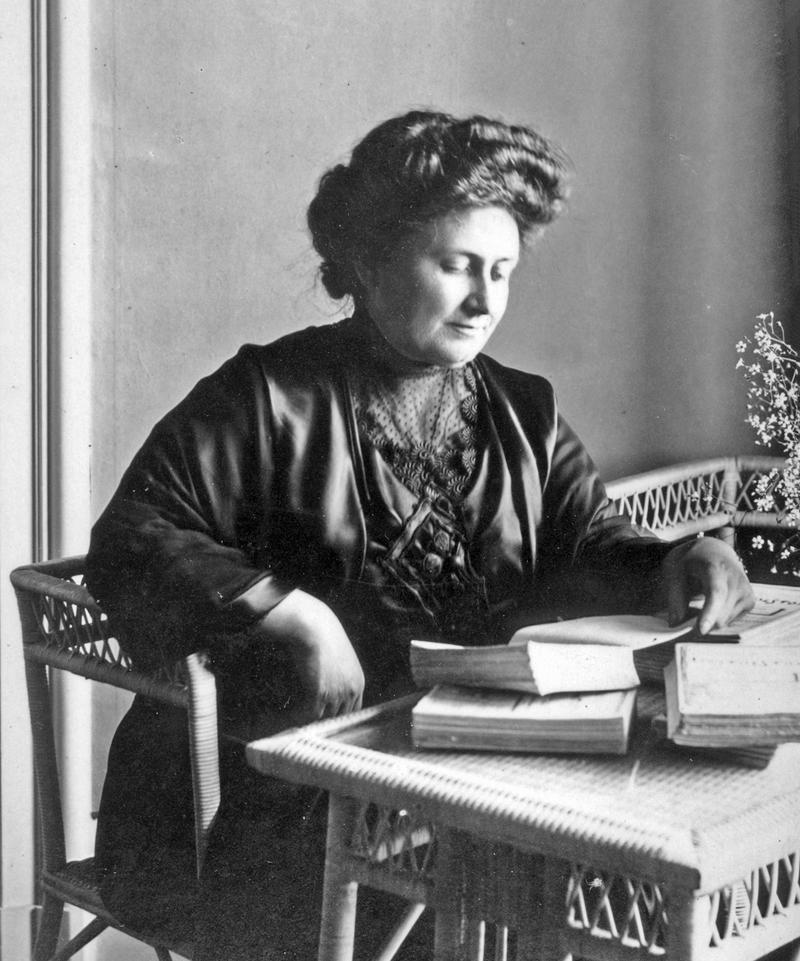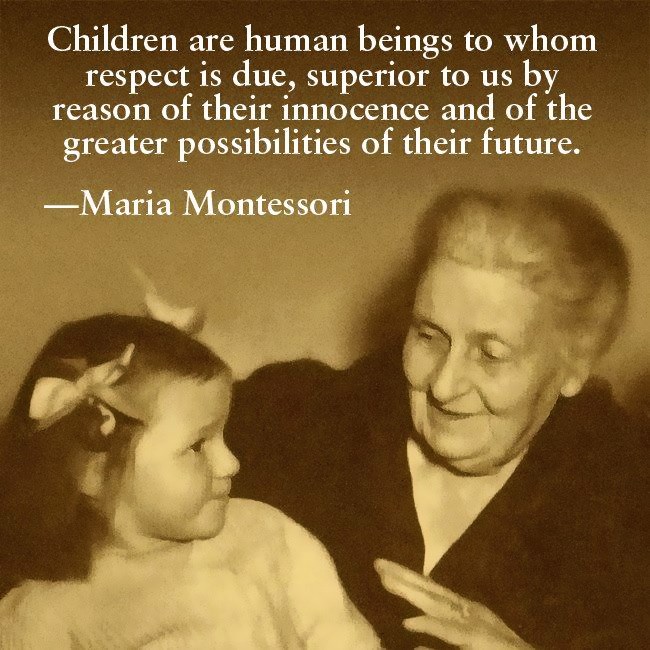Dr Maria Montessori: Her Life and Work
Posted

| Maria Tecla | Artemisia Montessori |
|---|---|
| Born | August 31, 1870 |
| Chiaravalle, Marche, Italy | |
| Died | May 6, 1952 (aged 81) |
| Noordwijk, South Holland, Netherlands | |
| Resting place | Noordwijk, Netherlands |
| Nationality | Italian |
| Education | University of Rome La Sapienza Medical School |
| Occupation | Physician and educator |
| Known for | Founder of the Montessori method of education |
| Children | Mario Montessori Sr. |
| Signature | |
| (source wikipedia) |
She was an Italian physician and educator best known for the philosophy of education that bears her name, and her writing on scientific pedagogy. At an early age, Montessori broke gender barriers and expectations when she enrolled in classes at an all-boys technical school, with hopes of becoming an engineer. She soon had a change of heart and began medical school at the University of Rome, where she graduated – with honors – in 1896. Her educational method is in use today in many public and private schools throughout the world.
After graduating from the University of Rome in 1896, Montessori continued with her research at the University’s psychiatric clinic, and in 1897 she was accepted as a voluntary assistant there. As part of her work, she visited asylums in Rome where she observed children with mental disabilities, observations which were fundamental to her future educational work. She also read and studied the works of 19th-century physicians and educators Jean Marc Gaspard Itard and Édouard Séguin, who greatly influenced her work. Maria was intrigued by Itard’s ideas and created a far more specific and organized system for applying them to the everyday education of children with disabilities. When she discovered the works of Jean Itard and Édouard Séguin they gave her a new direction in thinking and influenced her to focus on children with learning difficulties. Also in 1897, Montessori audited the University courses in pedagogy and read “all the major works on educational theory of the past two hundred years”.

The first Casa, Casa dei Bambini and the spread of Montessori’s ideas
In 1906 Montessori was invited to oversee the care and education of a group of children of working parents in a new apartment building for low-income families in the San Lorenzo district in Rome. Montessori was interested in applying her work and methods to mentally normal children, and she accepted. The name Casa dei Bambini, or Children’s House, was suggested to Montessori, and the first Casa opened on January 6, 1907, enrolling 50 or 60 children between the ages of two or three and six or seven.
At first, the classroom was equipped with a teacher’s table and blackboard, a stove, small chairs, armchairs, and group tables for the children, and a locked cabinet for the materials that Montessori had developed at the Orthophrenic School. Activities for the children included personal care such as dressing and undressing, care of the environment such as dusting and sweeping, and caring for the garden. The children were also shown the use of the materials Montessori had developed. Montessori herself, occupied with teaching, research, and other professional activities, oversaw and observed the classroom work, but did not teach the children directly. Day-to-day teaching and care were provided, under Montessori’s guidance, by the building porter’s daughter.
In this first classroom, Montessori observed behaviors in these young children which formed the foundation of her educational method. She noted episodes of deep attention and concentration, multiple repetitions of activity, and a sensitivity to order in the environment. Given free choice of activity, the children showed more interest in practical activities and Montessori’s materials than in toys provided for them, and were surprisingly unmotivated by sweets and other rewards. Over time, she saw a spontaneous self-discipline emerge.
Based on her observations, Montessori implemented a number of practices that became hallmarks of her educational philosophy and method. She replaced the heavy furniture with child-sized tables and chairs light enough for the children to move, and placed child-sized materials on low, accessible shelves. She expanded the range of practical activities such as sweeping and personal care to include a wide variety of exercises for care of the environment and the self, including flower arranging, hand washing, gymnastics, care of pets, and cooking. She also included large open air sections in the classroom encouraging children to come and go as they please in the room’s different areas and lessons.
One of Montessori’s many accomplishments was the Montessori method. This is a method of education for young children that stresses the development of a child’s own initiative and natural abilities, especially through practical play. This method allowed children to develop at their own pace and provided educators with a new understanding of child development. Montessori’s book, The Montessori Method, presents the method in detail. Educators who followed this model set up special environments to meet the needs of students in three developmentally-meaningful age groups: 2–2.5 years, 2.5–6 years, and 6–12 years. The students learn through activities that involve exploration, manipulations, order, repetition, abstraction, and communication. Teachers encourage children in the first two age groups to use their senses to explore and manipulate materials in their immediate environment. Children in the last age group deal with abstract concepts based on their newly developed powers of reasoning, imagination, and creativity.
